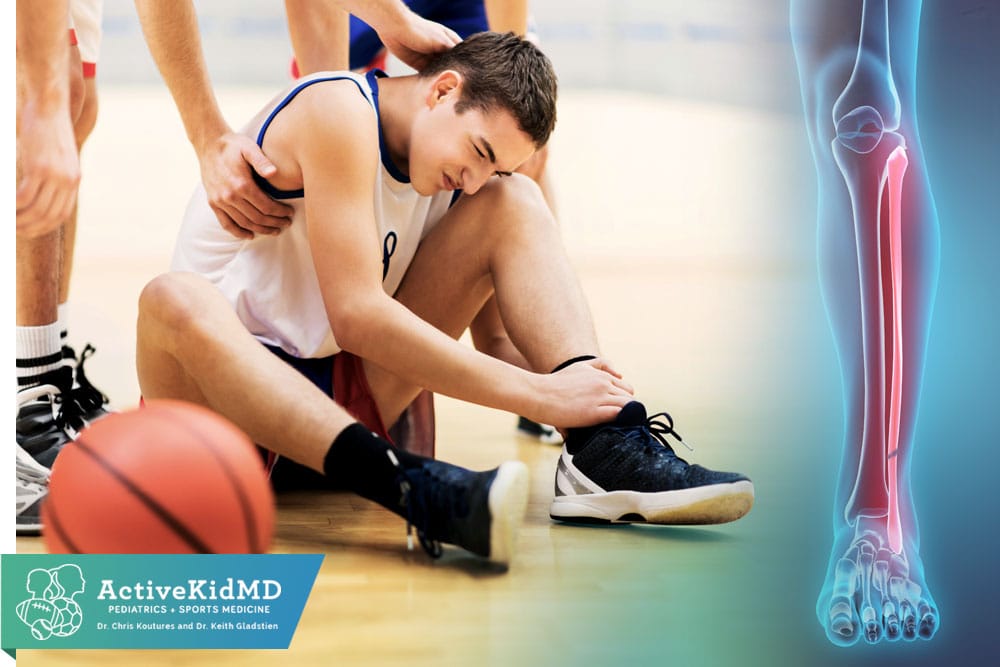They can be hard to understand, hard to suspect, and have unpredictable healing times.
WHAT ARE BONE STRESS INJURIES?
In describing bone stress injuries to patients, I often use the analogy of bending my pen while bored in class one day.
- If I just start trying to bend my pen, the pen doesn’t bend much. This represents a normal bone.
- As I continue to play with my pen, it does start to bend more. This represents a stress reaction where the bone is softer and less able to resist the continued load. A stress reaction will create swelling (bone edema) on a Magnetic Resonance Imaging (MRI) study. No true fracture line will be visible either on the MRI or plain x-ray study.
- If I’m really bored in class, my continued bending the more weakened pen eventually will cause it to completely break on one side. This represents a stress fracture where a fracture line is seen on one cortex (outer lining of the bone) on either MRI or plain x-ray.
- Even more attempts to bend my pen may result in breaking it in half. This represents a complete fracture where the fracture line is now easily visible on either MRI or plain x-ray.
Bone Stress Injuries: Stress Fracture of Left Femoral Neck. This MRI picture shows a fracture line involving only one cortex (outer lining) of the femur (thigh bone) with bone swelling (edema) also present.
WHEN DO YOU SUSPECT A BONE STRESS INJURY?
If there’s that history of too much, too fast, or too soon, I worry about a bone stress injury.
If there is an injury that just doesn’t seem to get better, I worry about a bone stress injury.
Now, if an athlete can take the tip of their index finger and point directly to a single spot on a bone, I definitely worry about a bone stress injury.
If there is any worry about a bone stress injury often x-rays and Magnetic Resonance Imaging (MRI) studies are used to make a formal diagnosis.
WHY DID I GET A BONE STRESS INJURY?
In my sports medicine specialist eyes, part one of the bone stress injury challenge is to make the diagnosis.
Part two of the challenge is equally, if not more important- figuring out what might have caused the injury.
Bone stress injuries are usually caused by high loads on normal bone, or normal loads on weaker bones.
I will routinely see athletes who have been diagnosed with a bone stress injury and are looking for clues about causes and how best recover and reduce risk of future problems.
High loads can be from too much, too fast, too soon:
- Too many hours a week or days a week without rest
- Too high an intensity of activity
- Improper technique overloading a certain region of the body
- Too many reps (jumps, swings, kicks)
- Amping up too quickly when starting something new or playing with older kids.
- Not getting enough restorative daily sleep (minimum of 8 hours a night)
Weaker bones tend to come from:
- Unhealed past injuries
- Not enough calories (often takes sports nutritionist to calculate athlete’s individual daily calorie needs)
- Limited calcium/Vitamin D intake (recommend 3-4 servings a day of dairy and other calcium containing foods)
- Low red cell counts and iron stores
- Adolescent and older females not having regular periods that build bone strength (potential problems if less than 9 periods in 12 months or more than 3 consecutive months without a period).
Yes, I definitely understand young athletes being uncomfortable talking about food choices, caloric intake, and menstrual periods. However, these are important topics for bone health. Sensitive discussions that explain why these questions are being asked can help identify injury causes, reduce future risk and improve future performance.
HOW DO YOU GET A BONE STRESS INJURY TO HEAL?
Knowing the exact location and type of bone stress injury can contribute to the most accurate treatment plan.
Knowing sleep and nutrition needs while having regular periods (for females) is key for current healing and future bone development.
The usual healing goal is to protect the injured area by keeping the activity below levels that cause pain. This could mean no impact exercise (running, jumping or leaping). In some cases, putting limited or no weight on the injured body part (by using a cast/boot, crutches or a scooter) may be the best plan.
There are certain types of higher risk bone stress injuries that may even need surgical repair. Knowing your exact type of bone stress injury can limit the risk of further complications by helping determine what you should and shouldn’t do in your recovery.
WHAT CAN AN ATHLETE DO WHILE RECOVERING FROM A BONE STRESS INJURY?

So, for lower body injuries, this often may include non-impact activities such as using an exercise bike, elliptical machine work, or swimming/pool workouts. Some performers may be able to mark steps, do upper body movements, and use barre/mirrors for dance classes. Others might be able to work on improving technique to reduce abnormal loads. There are even specialized anti-gravity treadmills that may allow running during the recovery phase. Non-injured body parts can be used in carefully selected and supervised stretching and weight training exercises.
Working with a sports medicine specialist can design individualized recovery programs involving cross training that help reduce emotional stress and keep up levels of physical activity.
This blog post does not intend to diagnose or provide management tips for any particular bone stress injury, or for any injury or illness. With any suspected bone stress injury or other injury, please immediately contact us or your regular sports medicine specialist for evaluation and treatment.
Please also contact us If you aren’t certain about:
- If I have a bone stress injury?
- What can while I am healing from a bone stress injury?
- What caused my bone stress injury?




